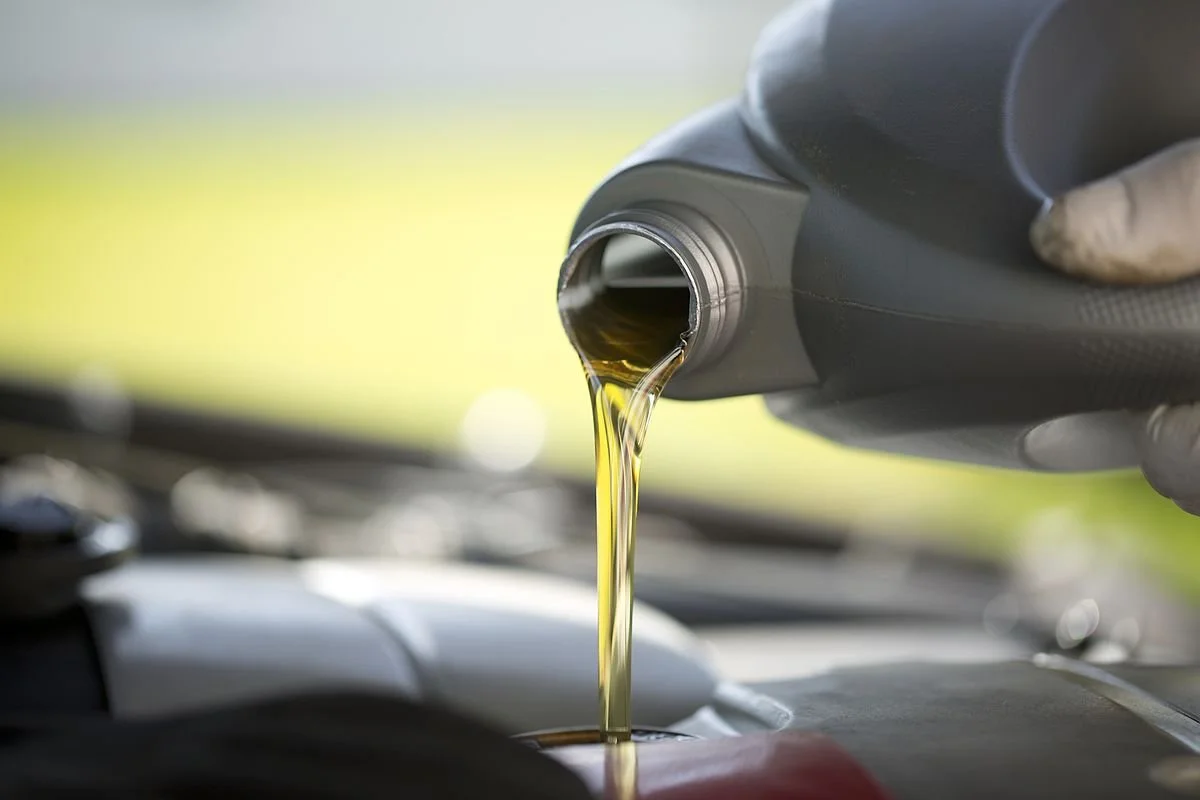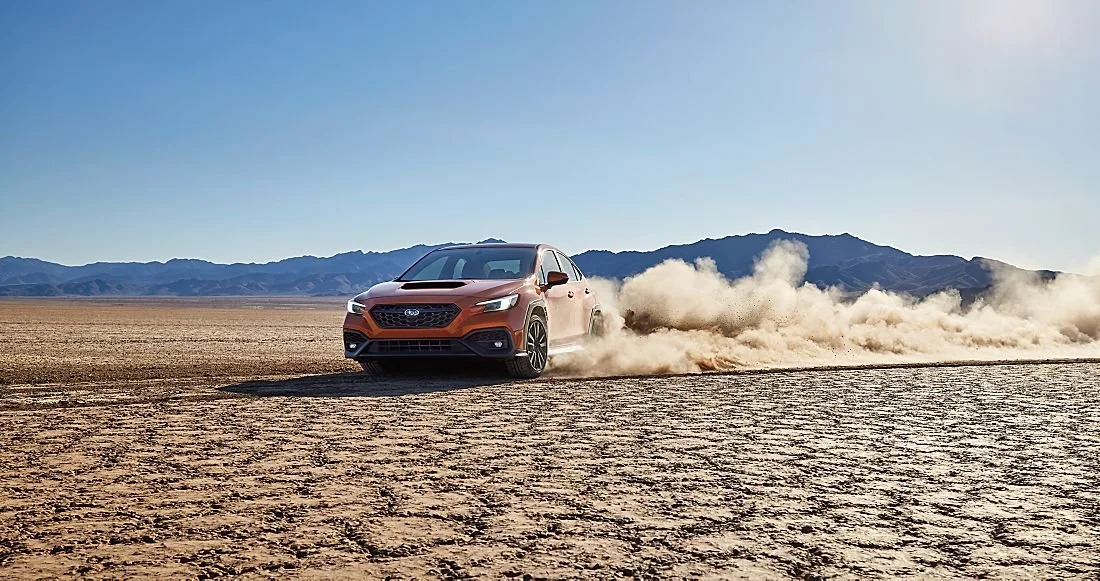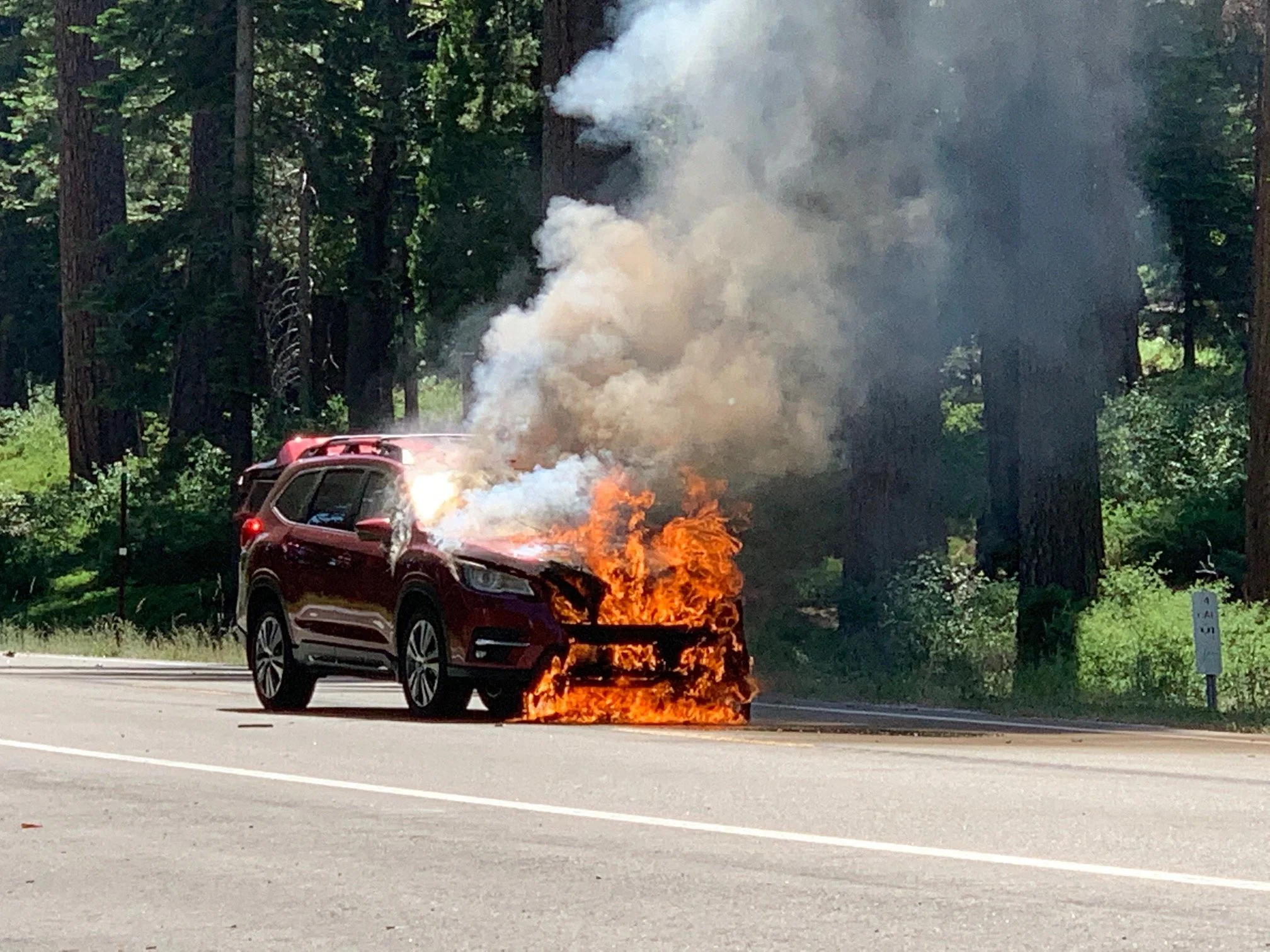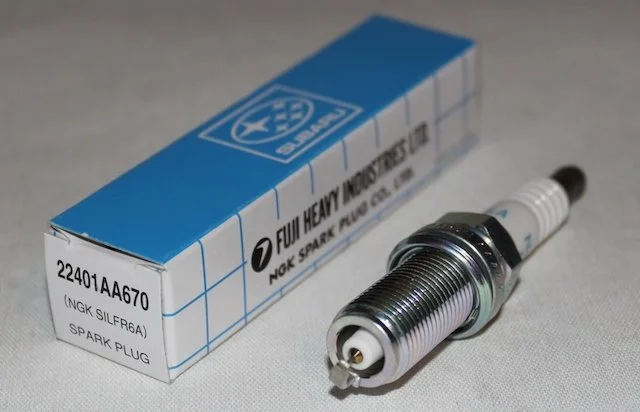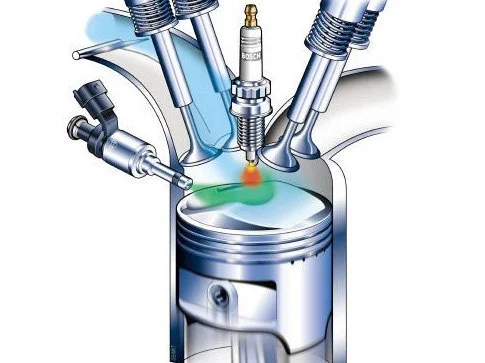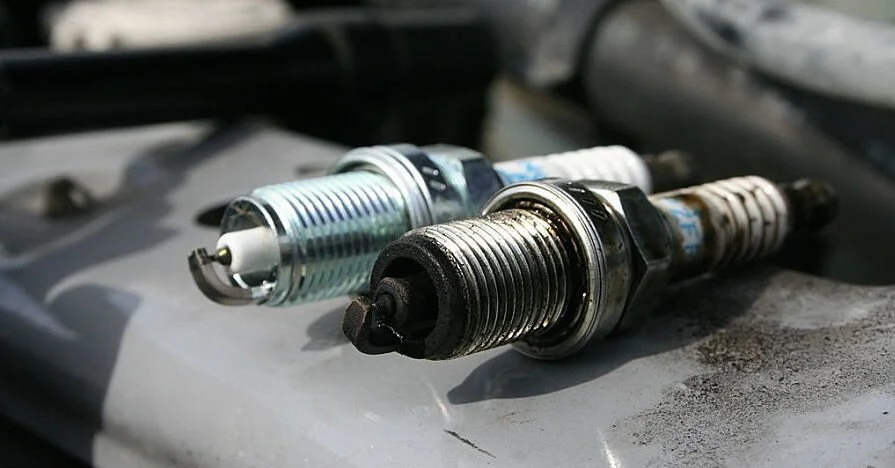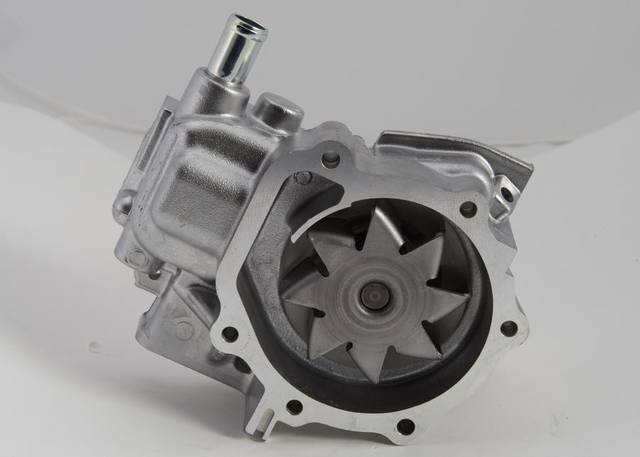
Lower Control Arm Bushings: Why are they important?
Subaru’s Common Issue:
Subaru vehicles are known for their reliability and longevity, but even the most well-maintained cars can experience wear and tear over time. One component that often needs replacement in Subaru vehicles is the lower control arm bushings. In this blog, we'll discuss the importance of replacing lower control arm bushings on a Subaru, and what signs to look out for that indicate it's time for a replacement.
What are lower control arm bushings?
First, let's start with what lower control arm bushings are and what they do. The lower control arm is a critical component of a vehicle's suspension system, and the bushings serve as a buffer between the control arm and the frame. They help to absorb shocks and vibrations while also providing a smooth ride. Over time, the rubber in the bushings can wear down, causing them to crack or even completely fall apart.
Why are they important?
So why is it important to replace lower control arm bushings on a Subaru? One of the primary reasons is safety. When the bushings are worn down, they can no longer effectively absorb shocks and vibrations, which can cause the car to feel unstable or wobbly while driving. This can be particularly dangerous at high speeds or when making quick turns. In addition, worn bushings can also affect a vehicle's alignment, causing uneven tire wear and potentially leading to more serious problems down the line.
Replacing lower control arm bushings on a Subaru can also improve the car's handling and overall driving experience. When the bushings are functioning correctly, they help to keep the suspension system properly aligned, which can improve steering response and cornering ability. This can make for a more comfortable and enjoyable ride, as well as help to prevent damage to other components of the vehicle's suspension system.
Do i need to replace mine?
So how can you tell if it's time to replace the lower control arm bushings on your Subaru? One of the most common signs is a noticeable vibration or shaking while driving, particularly at high speeds. You may also feel a pulling sensation while turning or notice uneven tire wear. Additionally, if you notice that the car's handling feels off or if you hear clunking or banging noises coming from the suspension system, it's a good idea to have the bushings inspected by a qualified mechanic.
Conclusion:
Replacing lower control arm bushings on a Subaru is an important part of maintaining the vehicle's safety and performance. By ensuring that the suspension system is properly aligned and functioning as it should, you can enjoy a smoother, more comfortable ride while also preventing more serious problems from developing down the line. If you suspect that your bushings may need replacement, don't hesitate to contact PM Autoworks to have them inspected by a professional mechanic.
Oil Leaks: Why should we fix them?
Oil leaks
Your vehicle's engine is the heart of your car, and keeping it in good condition is essential for optimal performance and longevity. One issue that can arise with any car is an oil leak. Oil leaks can occur for many reasons, including worn gaskets, damaged oil seals, or a faulty oil pan. Regardless of the cause, it's essential to fix oil leaks as soon as possible. Here are some reasons why.
Protecting the Engine
Your engine relies on oil to lubricate its many moving parts. If your car is leaking oil, the engine may not receive the proper amount of lubrication it needs to function correctly. Over time, this can cause increased wear and tear on the engine, which can result in costly repairs or even engine failure. By fixing oil leaks promptly, you can help ensure that your engine stays healthy and runs smoothly for years to come.
Maintaining Optimal Performance
A well-maintained engine is essential for optimal performance. When your car is running smoothly, you'll enjoy a comfortable and reliable ride. However, when your vehicle is leaking oil, you may notice a decrease in performance. Oil leaks can lead to reduced fuel efficiency, decreased power, and even stalling. By fixing oil leaks, you can help maintain optimal performance and ensure your car runs as smoothly and efficiently as possible.
Saving Money in the Long Run
While fixing oil leaks may seem like an unnecessary expense, it can save you money in the long run. If left unchecked, oil leaks can cause significant damage to your engine, which can be costly to repair or replace. Additionally, oil leaks can lead to decreased fuel efficiency, which can result in higher fuel costs over time. By fixing oil leaks promptly, you can prevent further damage and save money in the long run.
Preserving the Environment
Oil leaks can be harmful to the environment. When oil leaks from your car, it can contaminate the ground, water, and air. The oil can also harm wildlife and vegetation in the surrounding area. By fixing oil leaks promptly, you can help prevent environmental damage and reduce your impact on the planet.
Ensuring Safety
Oil leaks can be hazardous, especially if the oil drips onto hot engine components or the road surface. This can cause a fire hazard or make the road surface slippery, leading to a potential accident. By fixing oil leaks, you can ensure your safety and the safety of those around you.
Conclusion
In conclusion, fixing oil leaks is essential for protecting your engine, maintaining optimal performance, saving money in the long run, preserving the environment, and ensuring safety. If you notice that your car is leaking oil, it's important to have it inspected by a qualified mechanic as soon as possible. By taking care of your car and addressing any issues promptly, you can enjoy a safe, reliable, and comfortable ride for years to come.
Wheel Bearings: Why are they important?
What are wheel bearings?
Wheel bearings are a vital component of a Subaru's wheel assembly, helping to reduce friction and enable smooth wheel rotation. Over time, wheel bearings can become damaged or worn down, leading to a range of issues that can compromise the safety and performance of your vehicle. In this blog, we'll explore why it's important to change the wheel bearings on your vehicle when they're damaged or worn down.
signs of a wheel bearing failure
The most common sign of a damaged wheel bearing is a loud grinding or humming noise coming from the wheel area. This noise is often more pronounced when turning or changing lanes and can indicate that the bearing has worn down or become damaged. When a wheel bearing is damaged, it can cause a range of problems, including reduced fuel efficiency, uneven tire wear, and poor handling.
Why should you replace them?
One of the main reasons why it's important to change the wheel bearings on your vehicle is safety. A damaged or worn down wheel bearing can cause the wheel to become unstable, increasing the risk of accidents or even wheel detachment. This can be especially dangerous at higher speeds or in poor weather conditions.
In addition to safety concerns, failing to replace a damaged wheel bearing can also lead to additional wear and tear on other components of the wheel assembly. This can result in costly repairs down the line and reduce the overall lifespan of your vehicle.
When it comes to replacing wheel bearings on your vehicle, it's important to have the repair performed by a qualified mechanic with specialized knowledge and tools. This is because the process of replacing a wheel bearing involves removing the wheel hub and can be complex and time-consuming.
In Conclusion
Changing the wheel bearings on your Subaru is crucial for maintaining the safety and performance of your vehicle. Signs of a damaged wheel bearing include loud noises and poor handling, and neglecting to replace a damaged bearing can lead to additional wear and tear on other components and costly repairs down the line. If you suspect that your wheel bearings may need replacement, it's important to have them inspected by a qualified mechanic as soon as possible.
Spark Plugs: Why should you replace them?
What are Spark Plugs?
The spark plugs in your Subaru play a vital role in the operation of your engine. They provide the spark that ignites the fuel and air mixture in the combustion chamber, powering the engine and allowing you to drive. Over time, spark plugs can wear down and become dirty, affecting engine performance and potentially causing damage. In this blog, we'll discuss why changing spark plugs is important on a Subaru and what signs to look out for that indicate it's time for a replacement.
Why Should you replace them?
One of the primary reasons to change spark plugs on a Subaru is to ensure optimal engine performance. When spark plugs become dirty or worn down, they can misfire, causing engine hesitation, stalling, and reduced power. This can make it difficult to drive, especially on hills or when accelerating quickly. Replacing the spark plugs can restore engine power and improve fuel efficiency, helping you get the most out of your vehicle.
Another reason to change spark plugs on a Subaru is to prevent damage to other engine components. When spark plugs misfire, it can cause unburned fuel to enter the catalytic converter, potentially causing damage to this important emissions control component. Additionally, misfiring spark plugs can cause damage to the engine's pistons and valves, leading to costly repairs down the line. By replacing spark plugs regularly, you can prevent these issues from occurring and prolong the life of your engine.
How Do I know when they need to be replaced?
So how can you tell if it's time to change spark plugs on your Subaru? One of the most common signs is a noticeable decrease in engine power and acceleration. You may also experience rough idling or engine hesitation, particularly when accelerating or driving uphill. In some cases, you may even hear a knocking or pinging sound coming from the engine. Additionally, if you notice a significant decrease in fuel efficiency, it may be time to replace your spark plugs.
Conclusion:
Changing spark plugs on a Subaru is an important part of maintaining optimal engine performance and preventing damage to other engine components. Signs that it's time for a replacement include reduced engine power, rough idling, and decreased fuel efficiency. By having your spark plugs inspected and replaced regularly, you can ensure that your vehicle is running smoothly and avoid costly repairs down the line. If you suspect that your spark plugs may need replacement, don't hesitate to call PM Autoworks to have them inspected by a qualified mechanic.
Timing Belt: Why is it Important?
What is a timing belt?
A timing belt is a belt that keeps the engine components in sync with each other. It is a belt that connects the crankshaft to the camshafts and keeps the engine running smoothly. In order for an engine to operate properly, the valves need to open and close at the right time as the engine rotates. A degree too early or a degree too late and the engine may have trouble with getting in the right amount of air/fuel mixture or have compression issues. Both are a cause for Engine Cylinder Misfire (running rough). For that reason the timing belt is there to make sure that the engine components are in sync.
Why is it important to replace the timing belt?
The reason why its important replace the timing belt is to prevent it from breaking and causing major engine damage. Subaru engines in particular are interference engines meaning that if the timing belt breaks, the valves and pistons may collide and cause serious damage to these components. When this happens the repair can cost thousand dollars and in a worst case scenario, a new engine may be required. This is why it is highly recommended to replace the timing belt at the recommended service interval.
How often should the timing belt be replaced?
It is best to check with the car manufacturer on when to service the timing belt. For Subaru vehicles in particular (and many other manufacturers), it is recommended to replace the timing belt every 105,000 miles or 10 years. The reason behind this is because the timing belt is made partially of rubber, and rubber can degrade in couple ways:
1) Over prolong use. As the engine rotates, the timing belt is constantly under stress as it flexes around pulleys and is being pulled by the crankshaft. After a certain amount of engine rotations, the timing belt will eventually become weak and break.
2) Over Time. Like many things in life, rubber does have a shelf life. As time goes by it starts to become dry and brittle (especially with heat). When this happens the rubber will develop cracks which will eventually cause it to break. Think of an old rubber band that has been sitting in the sun for a while. If you try to stretch it you’ll notice that it cracks rather than stretches and breaks way before it reaches its intended stretching point.
What is the best timing belt brand to use?
We recommend using only OEM timing belts as these belts have been tested and proven to have a service life of 105,000 miles or 10 years. Although there are other after market belt options that may be cheaper, they may not be as reliable as an OEM belt. The money saved on a cheaper timing belt may end up costing more in the long run. There are good aftermarket belt options out there although research is recommended before purchasing.
What else should be replaced while doing the timing belt?
Along with the timing belt, there are other components that we highly recommend replacing while the engine is taken apart. These items include the tensioner, accessory pulleys, and the water pump.
The timing belt tensioner is what keeps the belt at the proper tension during engine operation. Too tight and the belt is overly stressed. Too loose and the belt may skip a tooth. Just like the timing belt on Subarus, the tensioner also has a life span of 105,000 miles or 10 years.
From what we’ve seen at many dealerships when the servicing the timing belt, the accessory pulleys and water pump are not always replaced. This is a bad idea because the timing belt rides on these pulleys and if one of these components fail, the timing belt may fail with it.
Conclusion
The timing belt should be replaced as per manufactures recommendation. For Subaru vehicles it is every 105,000 miles or 10 years. If the timing belt service is neglected, major engine damage can result from the belt snapping. When this happens the repair may cost several thousand dollars. As a preventative, it is important to replace the timing belt as well as all other accessory components using high quality OEM parts at the correct service interval.
If you need your timing belt service done on your Subaru, feel free to give us a call or email here at PM Autoworks for a free estimate. Rest assured, we will use only high quality OEM parts that come with a 1-year/12,000 mile warranty. Don’t wait, call now!
Oil Changes: Why Is It Important?
When we talk about car maintenance, oil changes are at the top of the subject. Why? Engine oil is Vital to the health of the engine & is the life blood that keeps it going. It is the lubrication that the mechanical parts need to keep moving and to stay cool. Without oil the engine would literally eat itself up and fail within minutes.
Engine Oil: Why is it important?
When we talk about car maintenance, oil changes are at the top of the subject. Why? Engine oil is Vital to the health of the engine & is the life blood that keeps it going. It is the lubrication that the mechanical parts need to keep moving and to stay cool. Without oil the engine will destroy itself from all the friction between the internal components.
What happens if you don’t change your engine oil?
If we don’t change our engine oil on time as per recommended by manufacturers, two things can happen: Oxidation and Contamination of the lubricant. Both of these things can have very adverse effects on the engine as we’ll see why in a moment.
Oxidation is the process in which a substance is chemically combined with oxygen. When you leave an Avocado out and it starts to turn brown, that process is called oxidation. Just like the Avocado, our engine oil is no exception. During normal engine operation, the engine oil temperature increases which also increases the rate of the chemical process. This can result in several problems including….
Formation of sludge and deposits that reduce engines efficiency and increase the risk of engine failure
Increased oil viscosity which reduces mechanical efficiency and fuel economy.
Additive depletion, reducing the effectiveness of the oil
To fight against oxidation manufacturers are now switching to Synthetic oils which has a much higher resistance to the chemical process. This is why it is important to use high quality fluids when servicing your vehicle.
When it comes to oil Contamination there are two types: Abrasives and Fluids
Abrasives are the top problem-inducing contaminants because they tend to cause the most damage. These can include dust and dirt that gets into the engine and circulates through the oiling system. Although there is an oil filter to help prevent this type of damage, some particles are small enough to make it past the filter.
Water and Fuel contamination is also an enemy as far as oil is concerned. Water and Fuel can find itself trapped inside oil which has a laundry list of adverse effects. This is especially true if we take short trips without warming up the engine. Water can cause iron or steel parts in the engine to rust which not only causes them to deteriorate, but turns them into an abrasives. Water is also a very bad lubricant and will increase engine wear if to much is present.
What does this all mean?
If you want to keep your car running smooth and avoid catastrophic engine failure: Change your cars engine oil as per recommended by manufacturer! For some cars this may be every 3,000 miles and others every 7,000 miles. All in all it’s good insurance. You can change your oil yearly for ~$300 or risk engine repairs up to ~$6,000. The choice is yours.
Ask PM Autoworks about your Factory Subaru oil change intervals and see how we can help you avoid engine damage.
Transmission Fluid: Do I need to change mine?
Transmission Fluid: Do I need to change mine?
There are many Fluids that run through your vehicle and one of the most overlooked is the Transmission fluid. If the driven without servicing, the fluid may become ineffective as a lubricant and lead to catastrophic failure. And when a transmission fails, it is not cheap to replace.
Transmission Fluid: Do I need to change mine?
There are many Fluids that run through your vehicle allowing it to operate smoothly and one of the most overlooked is the transmission fluid. If driven without servicing, the fluid may become ineffective as a lubricant and may lead to catastrophic failure of the transmission.. And when it fails, it is not cheap to fix.
What is Transmission Fluid
Transmission Fluid is a special type of oil that is used to lubricate moving parts within your transmission. Automatic, CVT, and Manual transmissions all use a different type of fluid and it is important to know when and why you should change them.
When is it recommended to replace the Transmission Fluids for a Subaru?
As per recommended by Subaru, the transmission fluid should be inspected every 30,000 miles and depending on the condition, it may need to be changed out. The condition of the fluid depends on a variety of factors such as driving conditions, use of vehicle, and how many miles are on it.
Cars that are exposed to severe driving conditions need fluid changes more often than cars driven normally. Severe driving conditions as defined by Subaru would include:
extensive idling or long periods of stop-and-go traffic
driving in dusty environments
driving up and down hills
driving in freezing temperature or temperatures greater than 90 degrees
carrying a heavy load
and of course, racing.
If your car is subjected to severe driving conditions, it is recommended that the transmission fluid be changed out every 30,000 miles. From what we have seen here with Subaru’s driven in California most of them need their drive-train fluids changed out every 60,000 miles and a hand full require them to be changed out at 30,000 miles upon inspection.
Why should you change your transmission fluid?
Just like Engine oil, transmission fluid breaks down and becomes less effective as a lubricant with the introduction of heat. Cars driven under severe driving conditions are exposed to more heat and need the fluids to be changed out more often.
In an Automatic and CVT transmission, the fluid plays a larger role than it does in a manual transmission. It’s purpose is not only to act as a lubricant but it is also meant to serve as a coolant and a viscous fluid that transmits power from the engine to the transmission. All this produces more heat which leads to more stress on the fluid and ultimately, causes it to break down.
Although a manual transmission is not as susceptible to heat as an automatic transmission, heat can still be in issue in severe driving conditions. The main concern though, is contamination. As the synchro’s, bearings, and gears in a manual transmission wears down it contaminates the fluid with metal shavings. If the fluid is not flushed out, then the transmission will be lubricated with metal shavings which will accelerate the wear on the transmission. This also applies to the front and rear differentials on the car.
Just as a Manual transmission is affected by contamination, so are Automatic and CVT transmissions. All 3 types should be checked for metal shavings during inspection.
What are the risks if I do not change my transmission fluid?
The main risk of not changing out the drive train fluids is that it can accelerate the wear on the transmission and cost you a big chunk of change to repair. The main purpose of maintenance is to prevent such costly repairs and it is an investment that should not be ignored! Check with PM Autoworks to see if you need your transmission fluid changed during your service. We can inspect the fluid and determine whether the condition is good to go for another 30,000 or if it should be changed out. Give us a call or email to schedule today!
HIGH-PERFORMANCE BRAKE FLUID: WHAT IS IT AND WHO NEEDS IT?
Upgrading to high-performance brake fluid isn’t the flashiest modification you can make to your vehicle, but if you ever intend to compete in an autocross event or try your car out at a track day, it’s a must-have. Moving to enhanced brake fluid is one of the most important upgrades you can make to any vehicle that will be driven quickly, and fortunately, it’s an easy one too.
Upgrading to high-performance brake fluid isn’t the flashiest modification you can make to your vehicle, but if you ever intend to compete in an autocross event or try your car out at a track day, it’s a must-have. Moving to enhanced brake fluid is one of the most important upgrades you can make to any vehicle that will be driven quickly, and fortunately, it’s an easy one too.
Boiling Over
On a track, your brakes can generate significant amounts of heat as they bring your vehicle down from speeds you might not normally reach on the streets. Over the course of a driving session, this heat can build up so much that the temperature of your brake fluid reaches past its boiling point, causing it to vaporize.
Vaporized brake fluid can be responsible for the “spongy” feeling you might notice in your brake pedal after a period of intense driving. Fluids don’t compress — which is the basis of any hydraulic braking system — but gasses do, and if your brake fluid has boiled, then those gases are now present in the lines. In addition to sponginess and softness, you’ll also notice increased fade, which is the term for when you press down on the brake pedal but don’t get back the same level of stopping power as you had earlier in the session.
Temperature Rising
There are four Departments of Transportation standards for street brake fluid, each with its own “dry” boiling point (“dry referring to fresh-out-of-the-bottle fluid), ranging between 401 degrees to 518 degrees Fahrenheit. That’s perfectly fine for daily driving, but in a more hardcore environment that range is usually too low to be considered safe.
Enter High-performance brake fluid. This fluid still meets DOT standards, but features a much higher dry boiling point. How is this accomplished? By refining out as many impurities as possible, engineers are able to boost the heat resistance of the fluid by an impressive amount. In fact, some fluids boast a boiling point of 644 degrees Fahrenheit, although most hover around or just above the 600-degree Fahrenheit mark.
Plug and Play
The best news about high-performance braking fluid is that as long as it’s compatible with your vehicle’s braking system, you can flush out the stock fluid and fill it up with the race-ready stuff with no further modifications. We mentioned making sure the fluid is compatible with your vehicle’s braking system because some fluids are not meant for use with anti-lock braking systems, so do you research. Most track-oriented braking fluid is DOT 4, or DOT 5.1 compatible. It’s also important to keep in mind that you should still check, bleed and refill this type of brake fluid as needed in order to keep everything running safely and smoothly.
Not all vehicles headed to the track require high-performance brake fluid. If you car is relatively light and modestly powered, fresh synthetic fluid is most likely enough for your needs. For heavier, more muscled track steeds, however, high-performance fluid is wells worth the switch.
After a hard day at the track the entire brake system should be flushed and refilled with fresh fluid. The extreme heat cycles that the brakes endure during a race or hot lap session will cause the brake fluid to break down and begin to attract moisture (thus degrading the fluid). Even if you are not hitting the track, if your vehicle is equipped with a high performance brake system it should have the fluid serviced at least one a year.
Ask PM Autoworks about what brake fluid is right for you and your Subaru. We carry multiple high performance brake fluids to suite your needs on the street and track. We can give you our recommendation and bleed the system for you if you need us to. Safety is our main goal and rest assured, servicing your brake fluid regularly will help keep you safe.










